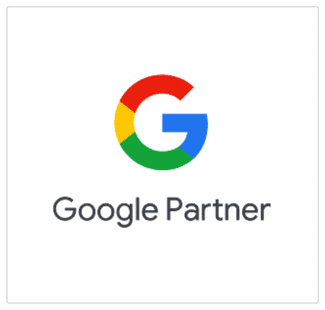Online store promotion is essential to attract customers and increase sales. In a digital world, where competition is fierce and consumers are bombarded daily with different offers, it is crucial to have a marketing strategy to differentiate yourself and capture the attention of your audience. An online shop without effective promotion risks going unnoticed, regardless of the quality of the products or services on offer. Therefore, it is essential to invest time and resources in developing marketing tactics that guarantee visibility and generate conversions.
Are you having difficulties attracting customers to your online store? In this article, I’ll tell you about the basic strategy for promoting your store, covering essential aspects such as identifying your target audience and creating buyer personas. These steps are fundamental if you want to understand who your potential customers are and what their needs are, allowing you to create personalized and relevant marketing messages. You will also learn about effective ways to promote an online store: online store promotion through Google Ads, Facebook Ads, SEO, organic content on social networks, email marketing and user generated content (UGC).
How do you identify your target audience?
Before starting any promotional campaign, it is crucial to understand who your potential customers are. Your target audience is the group of people who are most likely to be interested in your products. Without a clear understanding of this group, your marketing efforts can become ineffective and costly. Identifying your target audience not only helps you focus your resources effectively, it also allows you to create personalized, relevant and compelling messages that will resonate with your audience.
To identify your target audience, you need to start by gathering as much information as possible about your potential customers. This process involves market research, analysis of existing data and, in some cases, direct customer interaction. Once you have a clear picture of your audience, you will be able to develop marketing strategies that respond to their specific needs and preferences, choose the right promotional channels and develop messages that will attract and convert them into loyal customers.
To identify your target audience, answer the following questions:
-
- What are the demographics of my customers (age, gender, location, income, education)?
-
- What are their interests and behaviors (hobbies, online activities, buying habits)?
-
- What problems or needs do they have that can be solved by your products?
How do you create a buyer persona profile?
Once you have identified your target audience, the next step is to create buyer personas, i.e. detailed profiles of your ideal customers based on real data and observations. These buyer personas are essential tools to help you better understand your customers’ needs and motivations and create more effective marketing campaigns for your online shop.
Data collection
The first step in creating a buyer persona is data collection. This can be done through a variety of methods such as surveys, interviews and analyzing existing data. For example, you can send surveys to current customers and newsletter subscribers to learn more about their preferences and behaviors. Telephone or face-to-face interviews with a sample of customers also provide valuable and more nuanced insights. In addition, using web analytics tools, such as Google Analytics, helps you understand user behavior on your website, including pages visited, time spent on the site, and traffic sources.
Audience segmentation
Once you have gathered enough data, the next step is to segment your audience into groups based on common characteristics. This step helps you identify patterns and better understand the diversity of your customers’ needs and preferences. For example, you can segment your audience based on demographics, such as age, gender, location, income and education level. Buying behaviors, purchase frequency and channel preferences (online or offline) are also important segmentation criteria. Last but not least, customers’ interests and hobbies can provide valuable clues about what motivates them and what kind of content might resonate with them.
Create detailed profiles
Once you’ve segmented your audience, it’s time to create detailed profiles for each segment. These profiles should include a fictitious name to make the buyer persona more real and memorable, as well as detailed information about age, occupation, interests, challenges and goals. For example, you could describe a buyer persona as “Maria, a 35-year-old female marketing manager, fitness and travel enthusiast, looking for products that save her time and enhance her lifestyle.
Use buyer persona profiles
Once you have created these detailed profiles, use them to guide all marketing decisions for your online store. Buyer personas will help you personalize your marketing messages, choose the right promotion channels and optimize the user experience. For example, if you find that one of your buyer personas spends a lot of time on Instagram, you can focus your marketing efforts on this platform, creating visually appealing content that resonates with their interests and needs.
Ways to promote your online store
Once you’ve created buyer personas and have a clear understanding of your target audience, the next essential step is choosing the online promotion methods that will be most effective in reaching these ideal customers.
Online promotion through Google Ads
Google Ads is an essential pay-per-click (PPC) advertising platform for ecommerce, allowing ads to be displayed in Google results pages and on partner sites. The first step is to identify relevant keywords for your products. For example, for a fitness store, keywords might include “fitness equipment” or “nutritional supplements”. Choose keywords with high search volume and moderate competition to maximize exposure.

The next step is to create attractive and relevant ads that include a strong call to action, such as “Buy now and get free shipping!”. Test different variations to see which generates the best results. Budget setting and bidding are crucial; you can choose between manual or automatic bidding, constantly adjusting to optimize performance and get the best ROI.
Additionally, geographic and demographic targeting helps you display ads to users in specific locations and relevant demographic groups. For example, if you sell baby products, you can target ads to parents or people interested in parenting. In this way, Google Ads helps you precisely reach your desired audience and maximize conversions for your ecommerce business.
Campaign types
For an online store in the ecommerce sphere, you can use various types of Google Ads campaigns to attract customers and increase sales:
-
- Search Campaigns:
These display your ads on Google search engine results pages. They are ideal for attracting users who are actively searching for your products using relevant keywords.
-
- Shopping Campaigns:
These campaigns display ads with product images, prices and store name directly in Google search results. They are highly effective for ecommerce, as they provide visual information and essential details that can attract clicks and conversions.
-
- Remarketing Campaigns:
These target users who have previously visited your website but have not finalized a purchase. Remarketing ads encourage them to return and finalize their purchase, thus increasing the conversion rate.
Promotion through Facebook Ads

Facebook Ads is an extremely powerful advertising platform for promoting an online store, due to its ability to reach a specific audience through various types of campaigns. To effectively promote your online store on Facebook, it is essential to understand and properly utilize the different types of campaigns available.
Firstly, Brand awareness campaigns are ideal for increasing the visibility and recognition of your online store. These campaigns are designed to reach large numbers of people and create awareness around your brand. Advertisements can include eye-catching images or videos that present your brand story, values and products. It’s important to use a clear message and captivating visuals to leave a lasting impression.
Traffic campaigns are essential to attract visitors to your website. These campaigns direct users to specific pages of your store, where they can discover the products and services you offer. To maximize the effectiveness of these campaigns, make sure your ads include a clear call to action, such as “Visit our online store” or “Discover our offer”. You can also use Facebook Pixel to track user behavior on your website and optimize campaigns accordingly.
To boost direct sales, Conversion Campaigns are highly effective. These campaigns are designed to encourage users to perform specific actions, such as purchasing a product or signing up for a newsletter. Implementing Facebook Pixel on your website is crucial to track and measure conversions. You can create dynamic ads that display specific products that users have previously viewed, encouraging them to complete the purchase.
Product catalog campaigns are perfect for online stores that have a large inventory. These campaigns allow you to create dynamic ads that automatically display products from your catalog based on user interests and behavior. For example, if a user has visited a specific product page, a product catalog ad can display that specific product, accompanied by other relevant recommendations. This type of campaign is great for personalizing the user experience and increasing the likelihood of conversion.
Remarketing campaigns are essential for re-engaging users who have previously interacted with your website but have not completed a purchase. These campaigns use data collected through Facebook Pixel to target users who have abandoned their shopping cart or visited specific product pages. Remarketing ads may include special offers, discounts or reminder messages to encourage users to return and complete the purchase.
Promotion through SEO

SEO (Search Engine Optimization) is an essential process for increasing the organic visibility of your online store in search engines such as Google. Proper implementation of SEO optimization strategies can attract quality traffic, improve user experience and increase sales. To effectively optimize your website, it’s important to focus on several key aspects of SEO.
First, keyword research is the foundation of any successful SEO strategy. Identifying the words and phrases that potential customers use to find your products is essential. Tools such as Google Keyword Planner, SEMrush or Ahrefs can help you find relevant keywords and understand their search volume and difficulty. Once you have a list of relevant keywords, strategically integrate them into page titles, product descriptions, URLs and meta descriptions to improve relevance and search engine rankings.
Creating quality content is another crucial component of SEO. Search engines favor sites that provide valuable and relevant content to users. Publishing blog articles, buying guides, product reviews and other types of content that respond to users’ questions and needs can attract organic traffic and improve your site’s authority. It is important that this content is unique, well written and optimized with relevant keywords. Also, blog posts and articles can include internal links to your product pages, thus improving navigation and the distribution of authority on your site.
Technical websiteoptimization is essential to ensure a good user experience and to facilitate correct indexing by search engines. Make sure your site is fast and mobile-friendly, as loading speed and compatibility with mobile devices are important ranking factors. Use clear and descriptive URL structure to help both users and search engines understand the content of your pages. Implementing an XML sitemap and schema markup helps search engines correctly index your site’s pages and understand the relationships between them.
Link building is another important aspect of SEO. Obtaining external links (backlinks) from relevant and reputable sites can improve your site’s authority and search engine rankings. You can get links by creating valuable content that other sites want to mention, partnering with industry influencers or participating in relevant forums and blogs. It’s important to focus on the quality of links, not just the quantity, as higher quality links have a greater impact on your site’s authority.
Organic promotion on social media
Organic social media promotion is a highly effective way to increase the visibility of your online store and interact with your target audience. Platforms such as TikTok and Instagram offer excellent opportunities to create engaging content that grabs users’ attention without spending money on paid advertising.
On TikTok, short and dynamic videos are the key to success. You can create TikTok that showcase products through unboxing videos, demonstrating their functionality and features in an authentic and engaging way. These videos not only spark curiosity, but also build trust by showing users what they can expect from your products. Organizing giveaways is also an excellent strategy to attract followers and boost engagement. You can ask participants to follow your account, like and comment on your posts or share your videos to enter your giveaway, increasing visibility and interaction.
On Instagram, using Reels is essential to reach a wide audience. Similar to TikTok, you can create Reels with unboxings, product demos and quick tutorials. Another effective strategy is to organize giveaways on Instagram, asking participants to tag friends, use specific hashtags or share your posts in Stories. These actions not only increase the exposure of your posts, but also build an active and engaged community around your brand.
An important aspect of organic promotion on social media is user-generated content (UGC). UGC refers to content created by your customers, which can include reviews, photos, videos and social media posts about your products. This type of content is extremely valuable because it is authentic and credible, influencing the buying decisions of other potential customers.
User Generated Content – UGC

User Generated Content (UGC) is a powerful marketing strategy that can reinforce trust and loyalty to your brand. Encouraging customers to share their experiences with your products on social networks can create an avalanche of genuine recommendations and attract new customers.
How you choose content creators
To select the best creators, it’s essential to identify your target audience and make sure they align with your brand’s demographics. Assessing the rate of engagement and quality of content provided by creators is crucial, as is checking previous collaborations and feedback received from other brands. Making expectations transparent and establishing a clear compensation model are also important steps in ensuring a fruitful collaboration.
Once selected, content creators can bring substantial benefits, such as increasing your brand’s visibility and credibility, accessing new audiences and creating high-quality, authentic content. Creators already have a loyal audience who trust their recommendations, which can lead to a higher conversion rate for your products. In addition, the use of affiliate links can motivate creators through commissions for sales generated, ensuring enthusiastic and sustained promotion. These links also allow you to track each creator’s performance, giving you clear data to measure ROI and optimize long-term marketing strategies. Collaborating with respected and authentic creators not only amplifies your brand message, but also helps build a loyal and engaged community.
Using affiliate links can motivate creators through commissions for sales generated, ensuring enthusiastic and sustained promotion, while giving you clear data to measure performance and optimize marketing strategies. In addition to increasing sales, collaborating with content creators can lead to increased audience interaction, valuable feedback and building a loyal community around your brand. Thus, strategic partnerships with relevant creators not only amplify your marketing messages, but also help reinforce an authentic and trusted brand image.
Setting up an online store is not just about developing a functional platform; it also involves a deep understanding of the e-commerce industry, which is constantly growing and evolving. Succeeding in such a competitive environment requires well thought-out marketing strategies and effective promotion on various social platforms such as Facebook, Instagram, TikTok and LinkedIn.
To attract and retain customers, it is crucial to implement digital marketing strategies that include SEO, content marketing, email campaigns and paid advertising. Each social platform has its own advantages and audiences, and tailoring your marketing messages for each channel can maximize the impact of your campaigns. From creating engaging and relevant content to utilizing influencers to increase brand credibility and visibility, every step counts in building a strong online presence.
To successfully navigate this complex landscape and achieve notable results, working with a specialized online marketing agency can be essential. With expertise in promoting on various social platforms and developing customized marketing strategies, re7consulting can help you achieve your business goals and maximize your growth potential. Don’t hesitate to get in touch with re7consulting and start the digital transformation of your business today!






